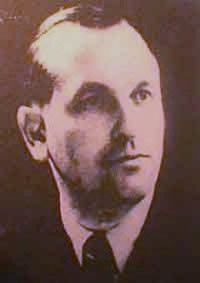Betz Georg
 Georg Betz (15 June 1903 – 2 May 1945) was a SS officer (SS number: 625,419), who rose to the rank of SS-Obersturmbannfuhrer during World War II. Betz served as Adolf Hitler's personal co-pilot and Hans
Baur's substitute. Betz was present in the Führerbunker in Berlin in late April 1945. On 1 May 1945, Betz took part in the break-out from the Reich Chancellery in Berlin. Early on 2 May 1945,
Betz was wounded and died while crossing the Weidendammer Bridge which was under heavy fire from Soviet troops. Betz was born in Kolbermoor near Rosenheim (Bavaria). He attended college for
mechanical engineering in Munich.
Georg Betz (15 June 1903 – 2 May 1945) was a SS officer (SS number: 625,419), who rose to the rank of SS-Obersturmbannfuhrer during World War II. Betz served as Adolf Hitler's personal co-pilot and Hans
Baur's substitute. Betz was present in the Führerbunker in Berlin in late April 1945. On 1 May 1945, Betz took part in the break-out from the Reich Chancellery in Berlin. Early on 2 May 1945,
Betz was wounded and died while crossing the Weidendammer Bridge which was under heavy fire from Soviet troops. Betz was born in Kolbermoor near Rosenheim (Bavaria). He attended college for
mechanical engineering in Munich.
Betz then trained as a pilot. In 1932, he became a captain and flew European routes for Lufthansa. He joined the SS and was transferred to the staff of Reichsführer-SS Heinrich Himmler. Betz was appointed captain of the reserve aircraft of Die Fliegerstaffel des Führers. Betz served as
Hitler's personal co-pilot and Hans Baur's substitute. Betz was promoted to SS-Obersturmbannfuhrer on 30 January
1944. He further held the rank of Oberstleutnant der Reserve in the Luftwaffe.
On 29 April 1945, the Soviet Red Army launched an all-out attack on the centre of Berlin. The Soviet artillery opened up with intense fire in and around the Reich Chancellery area. That evening
in the bunker complex below the Chancellery garden, Betz was present with Baur when Hitler said his farewell to
his personal pilots. Baur pleaded with Hitler to leave Berlin and recited his plan for flying Hitler to safety. It
was all in vain as Hitler turned Baur down, stating he had to stay in Berlin. By the following day, 30 April, the Red Army was less than 500 metres from the
Führerbunker. That afternoon, Betz was still present in the bunker complex during the time when Hitler committed
suicide.
In one of Hitler's last orders, he had given permission for the Berlin forces to attempt a breakout of the Soviet
encirclement after his death. General Helmuth Weidling, commander of the Berlin Defence Area, and SS-Brigadeführer Wilhelm Mohnke, the (Kommandant) Battle Commander for the centre government district, devised a plan to escape out from
Berlin to the Allies on the western side of the Elbe or to the German Army to the North. Mohnke split up the
Reich Chancellery and Führerbunker soldiers and personnel into ten main groups. Betz left the Reich Chancellery as part of one of the groups attempting to break out. After midnight on 2 May 1945,
Betz was part of a large group of German soldiers and civilians who crossed the Weidendammer Bridge while under heavy fire from Soviet tanks and guns. Betz was wounded during the crossing.
According to Erich Kempka, he came across Betz and left him in the care of Kaethe Hausermann. Other sources give
more details as to Betz's fate, stating that he died from his wounds received in the area of the Weidendammer bridge. Betz was age 42. After the war, a dictated order dated 20 April 1945 by
Gestapo chief Heinrich Müller was
discovered setting out a flight plan for Hitler's transportation to Barcelona, Spain. Hitler was to have been
flown there by Betz in a Ju 290 long-range aircraft. However, neither Hitler or Betz were able to leave Berlin alive.
